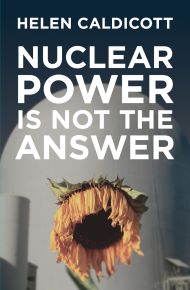 We’re going to speed things up in this post and hit the next three chapters. The main reason is because chapters 7 and 8 deal primarily with nuclear weapons, and since NEI is the policy organization of the commercial nuclear energy and technologies industry, I would like to stay focused on nuclear power.
We’re going to speed things up in this post and hit the next three chapters. The main reason is because chapters 7 and 8 deal primarily with nuclear weapons, and since NEI is the policy organization of the commercial nuclear energy and technologies industry, I would like to stay focused on nuclear power.Chapter 6 – Generation IV Nuclear Reactors
Other than the cynical tone throughout this chapter, nothing really stuck out for me to comment on. Dr. Caldicott did cite David Lochbaum from the Union of Concerned Scientists as saying (p. 127):
It is inappropriate for the industry to talk about Generation IV reactors when neither the United States nor the rest of the world has a Generation I high-level waste disposal site.That’s a good point. We should be focusing on what we are going to do with the used fuel. And that’s what NEI has been doing. Over the past month there has been much activity with Congress, such as hearings and legislation, to support the safe disposal of used fuel.
The great thing with used fuel, as stated by our President and CEO Skip Bowman, is that:
Used nuclear fuel is stored safely today at nuclear plant sites, either in pool storage or in dry casks. It could remain in storage at nuclear plant sites, posing no threat to the public health and safety or to the environment, for an indefinite period of time. From an operational and technical perspective, and from a health and safety perspective, there is no immediate need to move used nuclear fuel to centralized interim storage facilities.But since the United States and the world are looking at a “nuclear renaissance” (our CEO again):
it is absolutely essential to public and state policymaker confidence that the federal government identify and develop sites for centralized interim storage, ideally linked to future reprocessing facilities, and begin the process of moving used nuclear fuel to these interim storage facilities, in order to demonstrate its ability and willingness to meet its statutory and contractual obligation to move used fuel away from operating nuclear plants and decommissioned reactors.This is our primary focus but given that the used fuel is fine where it’s at, I think many would find it perfectly acceptable to design and build even better and even safer nuclear reactors for the future.
Chapter 7 – Nuclear Energy and Nuclear Weapons Proliferation
and
Chapter 8 – Nuclear Power and “Rogue Nations”
It is unfortunate that the nuclear power industry is stuck with the stigma of being connected to nuclear weapons. Everyone needs to recognize that whatever governments do with nuclear weapons should not be a reflection of commercial nuclear power. What we can and should always do is push our governments to use nuclear only for peaceful purposes and to get as far away from nuclear weapons as possible. And we have seen that happen between Russia and the United States.
The good that came out of the production of nuclear weapons was the ability to harness the atom for power. And as a result, the consumption of electricity has increased our standards of living and life expectancies.
And while proliferation is a concern, the Global Nuclear Energy Partnership is a program that addresses it. Unless I missed it, neither GNEP nor the Megatons to Megawatts program were mentioned at all in Dr. Caldicott’s book.
Enough on weapons. Stay tuned for the last post, which will sum up the last two chapters about Dr. Caldicott’s solutions and alternatives to nuclear power.
Technorati tags: Nuclear Energy, Nuclear Power, Electricity, Environment, Energy, Politics, Technology, Economics, Helen Caldicott, GNEP, Megatons to Megawatts
0 comments:
Post a Comment